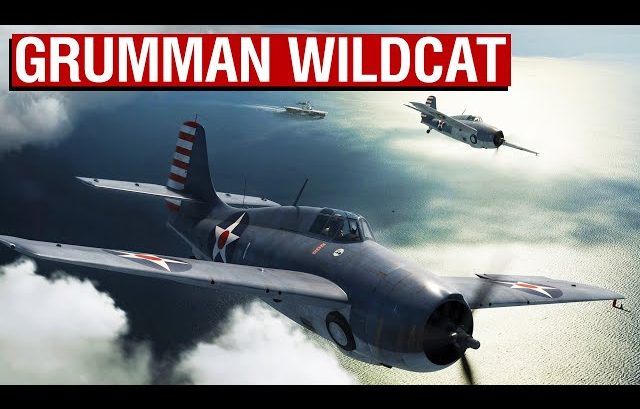During the first year of the war of the Pacific between the United States and Japan, there was just one fighter in the US Navy’s arsenal that could even hope of going toe-to-toe with the Mitsubishi A6m Zero and that is the Grumman F4F Wildcat. At that time, it was the best carrier fighter the world has ever seen.
The First Monoplane Fighter
Entering service in 1940, it was Grumman’s first monoplane fighter. It was built during the chaotic time when manufacturers were making the transition from biplanes to monoplanes. Thus, it was a mix of both older and cutting-edge technology.
It inherited several parts from its predecessors like its chunky, barrel-like appearance and its narrow fuselage-mounted landing gear. At the same time, it featured an extremely advanced powerplant, a potent armament, and a new ingenious style of folding wing.
Early US Service
In comparison to its warm reception with the British pilots, the Wildcats that were operated by the US Navy got off to a much poorer start.
A lot of pilots were need pleased by its handling, having been spoiled by the nimble F2F and F3F biplanes.
Holding Its Own
Very quickly, Wildcat pilots learned that Japanese Zeroes aren’t to be trifled with. The Zero was faster, climbed better, and turned tighter than the Wildcat.
In the right hands in was a deadly opponent, and it was often in the right hands as the A6M pilots were highly trained combat veterans. Yet, despite Zero’s apparent superiority, the Wildcat can hold its own as it could absorb significantly more damage. Moreover, not long into the war, many had been refitted with self-sealing fuel tanks- something the Zero completely lacked.
F4F4 and the Battle of Midway
Both opponents would clash again at the Battle of Midway, and this would feature a large number of enhanced F4F-4. This new version featured folded wings which allowed many more to be equipped aboard carriers.
Moreover, the armament was changed so that the -4 mounted six 0.50 caliber machine guns in the wings. A total of 2 F4F-4s took part in the Battle of Midway although they were still deemed inferior to the Zero, they shot down three Japanese aircraft or every Wildcat that was lost.
FM-2 Wildcat
By the end of 1942, the Wildcat had a kill-to-loss ratio of just under 6-to-1, and it had taken part in key battles that had turned the tide of the Pacific War. While it was eventually about to be outclassed by its successor, the F6F Hellcat, its most produced, and most successful model, the FM-2 Wildcat- hadn’t even entered service.
The most notable event involving the Wildcats from escort carriers was the Battle of the Leyte Gulf. 228 Wildcats across sixteen escort carriers would be involved. It also became one of the most intense periods of aerial combat for the Wildcat in the entire war.
By the end of the war of the Pacific, FM-2s from 38 squadrons had been credited with 432 aerial victories. The FM-2 also became the only Wildcat to see large-scale, dedicated use in the ground support role.



